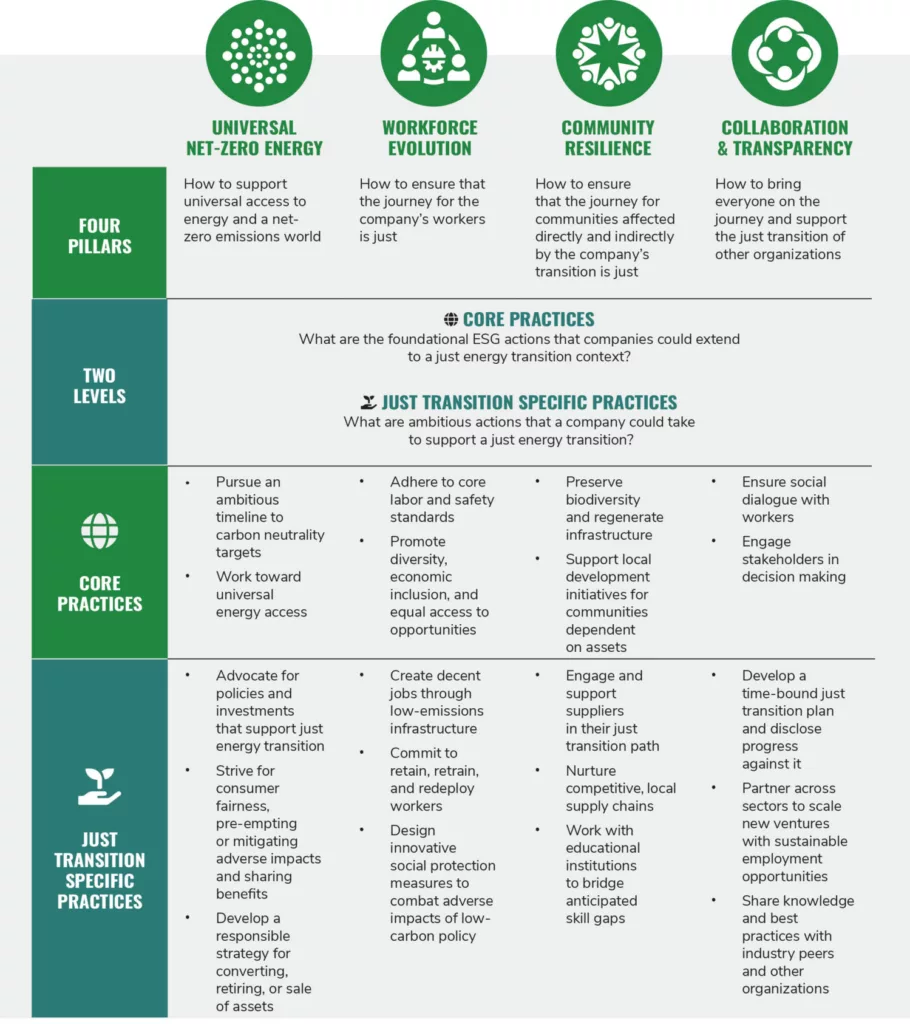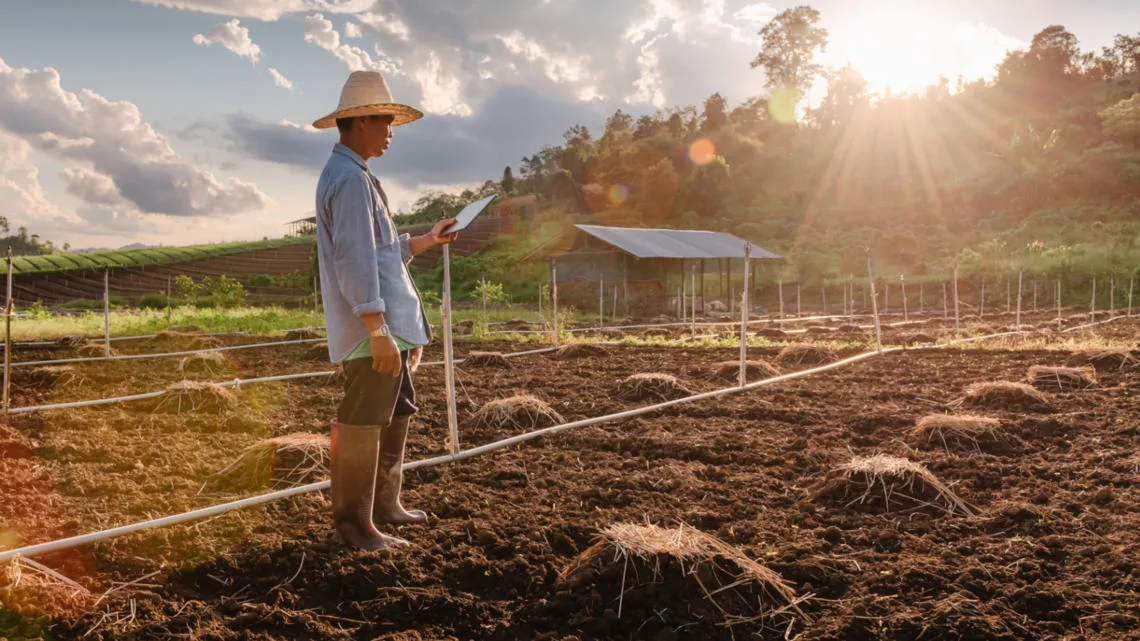Authors
Agriculture & Food Pathway, PwC, Council for Inclusive Capitalism
All actors in the global agricultural system – including governments, policymakers, companies, investors, and farmers – need to find new ways to decarbonize, protect nature, and tackle inequalities within the sector. To promote a shared understanding of what Just Transition action looks like in practice, and to support public and private collaboration, WBCSD, the Council for Inclusive Capitalism, and PwC have developed these insights and case studies in consultation with WBCSD member companies and partners operating in the agriculture sector.
A successful transition to net-zero must work for people. It must provide benefits for everyone and deliver thriving and resilient livelihoods. Sharing the costs and benefits of the transition equitably is key to making the transition a success.
So what does a just transition mean in practice for companies operating in the agricultural sector? From preliminary research and consultations with businesses and farming organizations, we’ve identified three key opportunities for companies in the sector:
- Support farmers and farmer-led climate initiatives.
- Invest in digital agriculture solutions.
- Put farmer livelihoods at the center of scope 3 emission reductions.
The recently published Agenda for business action from the Business Commission to Tackle Inequality defines Just Transition as acting in line with science to address the climate emergency and restore nature, while leveraging these transformations to advance shared prosperity. As the agriculture sector contributes toward building a net-zero and nature positive world, understanding and mitigating social and economic impacts on workers, suppliers, consumers and communities is essential.
The Council for Inclusive Capitalism’s Just Transition (JT) Framework for Company Action provides concrete guidance for businesses of all industries in how to advance a just transition to net-zero emissions, setting out core practices and more ambitious actions that companies can take under four guiding pillars, namely universal net-zero energy, workforce evolution, community resilience and collaboration and transparency.
Applying this guidance to the unique transition challenges in agriculture, we’ve identified three key opportunities for businesses in the sector to advance a Just Transition, that helps to spread the benefits to all involved. We detail these areas below and map them against the JT Framework’s four pillars, in turn divided into 20 building blocks.

1. Support farmers and farmer-led climate initiatives.
This action aligns most closely with the Workforce Evolution and Community Resilience pillars of the JT Framework.
Farmers hold a critical position in the economy in that they are able to both mitigate and adapt to climate change at the same time, for example by adopting regenerative agricultural practices. ‘Farmer Led’ does not mean that farmers can solve climate change challenges independently, but that solutions must be farmer-centric and that farmers need to be empowered and supported by wider agricultural value chain actors.
Farmers and farm workers are vulnerable, especially those with small holdings, because of their limited capacity to diversify and scale operations to meet changing market conditions. They generally have low-profit margins, little relative market power, high upfront input costs, low technical knowledge of climate-smart agriculture practices, and constraints to accessing finance. As farmers are vital to the security and quality of the global food supply, the vulnerability of farmers puts the whole food system at risk in the transition to net zero.
Many companies in the agriculture sector have been investing in strengthening farmer livelihoods for decades, with investments becoming more strategic as the understanding of farmer livelihoods and the transition risks they face matures. There are many levers to improving economic and social returns, including productivity and yields, strong land tenure, women’s empowerment, control of rising input costs, access to finance and fair prices. Companies within the sector have targeted programs to improve farmer livelihoods and address these levers.
Practical support to empower farmers through farmer-led initiatives can take various forms such as:
- Incentivizing and rewarding regenerative agriculture practices such as crop rotation.
- Strengthening access to financial, technical and educational resources.
- Enabling economic opportunities that allow diversification of farmers’ livelihoods.
See Case Study 1: The World Farmers’ Organisation’s Climakers program, promoting solutions that are farmer-driven, science-based and result-oriented.
2. Invest in digital agriculture solutions.
This action aligns most closely to the Community Resilience and Collaboration and Transparency pillars of the JT Framework.
Digital agriculture solutions have a significant capacity to enable a just transition in agriculture by generating multiple benefits. Benefits to the farmer might include ensuring better adaptation to climate related variabilities, weather changes and pest attacks, improved farm profitability and returns through better farm management and sale of produce. Climate-related benefits could be generated through better farm management, therefore reducing greenhouse gas emissions. Ensuring farmers practice low impact agriculture could also positively impact nature.
According to research conducted by the World Resources Institute in 2018, by 2050 we will need to produce approximately 60% more food to feed the global population, if we don’t change current consumption as well as food loss and waste patterns. Digital agriculture solutions are a key enabler to increasing yields while protecting the natural systems agriculture relies upon.
Businesses in the sector can provide leadership in digital agriculture through development of new technological and business model solutions that are climate smart and support farmers. For example, empowering farmers by providing them with high-quality data and optimizing crop inputs. Helping to upskill farmers in the latest technical know-how to address climate change challenges reduces sector emissions and improves farmer livelihoods.
See Case Study 2: OCP’s Al Moutmir initiative, employing a scientific approach to provide farmers with bespoke solutions to enable them to make better use of their land and optimize input use.
3. Put farmer livelihoods at the center of scope 3 emission reductions.
This action aligns most closely with the Universal Net Zero Energy, Community Resilience, and Collaboration and Transparency pillars of the JT Framework.
For companies downstream in the value chain such as food processors and food retailers, the bulk of their emissions fall into Scope 3: indirect value chain emissions. Most of these come from farming and sourcing of agricultural inputs. Nestlé for example, estimates that 95% of its emissions are scope 3, with 71% coming from activities to source ingredients for its products.
To tackle scope 3 emissions, businesses will need to work closely with their supply chains, monitoring actions to ensure progress is made towards their emission reduction targets. This could, for example, include incentivizing farmers to transition to regenerative agricultural practices that increase the carbon storage capacity of soil as well as improve water storage capacity and soil fertility. This shift reduces overall food system vulnerabilities, providing value not only to farmers, but also to businesses along the whole supply chain, and ultimately to consumers and society.
See Case Study 3: Nestle’s Income Accelerator Program, aiming to improve the livelihoods of cocoa-farming families, while also advancing regenerative agricultural practices to reduce emissions from cocoa farming.
To further this discussion, The Council for Inclusive Capitalism intends to work with multilateral institutions, sharing these and other best practices examples of just transition action. These efforts will seek to align policymakers, financiers and the private sector around a common understanding of what a just transition really means in practice, and support systemic integration of just transition practices into business as usual for all.
WBCSD news articles and insights may be republished in accordance with the Creative Commons Attribution-NonCommercial-NoDerivatives 4.0 International Public License, and in accordance with our Privacy Policy. All Content must be featured with due credits.
